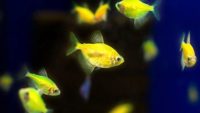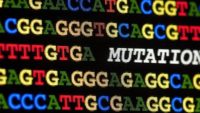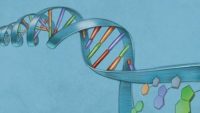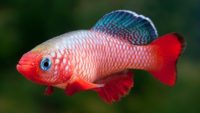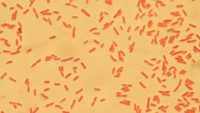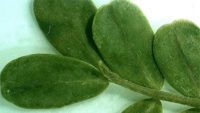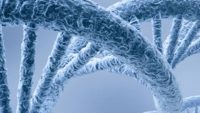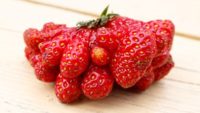By Dr. Georgia Purdom Just because a family member looks a little different doesn’t make her a different race—even if she’s adopted. …read more Source: AIG Daily
By Troy Lacey A recent Pew Research poll asked several interesting and introspective questions about potential or real genetic engineering experiments on animals. …read more Source: AIG Daily
With a new addition to the category of “uniquely human features,” MIT neuroscientists discovered a feature of human—not animal—brain cells. Certain human brain cells have much longer extensions called dendrites, and this research team found a uniquely human reason for it. The cerebrum lies just beneath the skull. It has folds and bends. This largest part of the brain manages all kinds … More… …read more Source: icr.org
By Ken Ham A recent study of the tiger genome confirmed that there are six extant (still in existence) subspecies of tigers; Bengal tiger, Amur tiger, South China tiger, Sumatran tiger, Indochinese tiger, and Malayan tiger. This new knowledge will aid in conservation efforts. But it also has an interesting creation connection, confirming exactly what we would expect starting with God’s Word. AiG’s Dr. Nathaniel Jeanson, who holds a PhD in cell and developmental biology from Harvard University, wrote these comments about the study: Evolutionists have long thought that species take hundreds of thousands to millions of years to form. [More]
By Harry F. Sanders, III What many people may not know is how the cleaning relationship exhibited by the cleaner wrasses demonstrates God’s design, even in the post-fall world. …read more Source: AIG Daily
By Dr. Kevin Anderson Since evolutionists view mutations as the genetic engine driving dramatic transformations, dark DNA could be a source of rapid, extensive evolutionary change. …read more Source: AIG Daily
Our scientific forefathers thought of germs as simple living things. They were oh, so wrong. Apparently, when it comes to living things, small does not mean simple. Two new discoveries about germs that live in or on human bodies take microbe ingenuity to a new level. In one report published in PLOS Pathogens, researchers under the direction of Luisa Hiller at Carnegie Mellon University decoded a germ’s … More… …read more Source: icr.org
A new study just came out that analyzed vast amounts of data from human genome samples from all over the world.1 Based on the evolutionists’ own theoretical model of evolution, 95% of the human genome is “restrained”—it can’t evolve. According to the popular neutral model of evolutionary theory, much of the human genome is not… More… …read more Source: icr.org
By Dr. Andrew Fabich The biblical account of Noah’s Flood provides an update to modern microbial biogeography and modern creation apologetics. …read more Source: AIG Daily
The drought tolerance of a popular grain, sorghum, makes it an important global food crop. A recent study finds that sorghum manipulates soil conditions to promote a beneficial change in the microbes living on its roots when water is scarce.1 The complex systems conferring such tight cooperation between plants and microbes point to a wise Creator for their origin far more reasonably than the mystical scenarios invoking strong &ld… More… …read more Source: icr.org
Evolution cannot explain the appearance of the first bird, but the awe-inspiring hummingbird baffles that idea beyond all reason. Read More
By Harry F. Sanders, III This article brings a study of African mitochondrial DNA (mtDNA) differences and discussed how it supports the young earth creation model. …read more Source: AIG Daily
Fruit flies’ ability to sniff out explosives explodes evolution myth Read More
The inclination of some evolutionists to project God-like powers onto nature is becoming more prominent in scientific literature. Some proudly personify nature in first-person, calling her Gaia after the Greek Earth goddess.1 Publishing in Science, evolutionary ecologist Tim Lenton from the University of Exeter and co-author, French sociologist Bruno Latour, laud nature’s innate cognitive pow… More… …read more Source: icr.org
By Harry F. Sanders, III Killifish have only rarely been addressed in major creationist literature and deserve a deeper look as they strongly point to a designer. …read more Source: AIG Daily
The biblical model of origins maintains the first forms of life created by God were the land plants complete with root systems on Day 3 of creation week. The first life did not evolve from inorganic non-life in some unknown primal ocean some unknown time ago. Land plants were fully-formed and functional—leaves, stems, flowers, seeds, roots, etc.—“In the beginning.” Not surprisingly, a recent ar… More… …read more Source: icr.org
By Matthew Augusta Even though some intestinal bacteria strains are pathogenic and deadly, most coliforms strains still show evidence of being one of God’s “very good” creations. …read more Source: AIG Daily
By Ken Ham A recent CBC news story caught my eye (that may be because the monkey in the article’s first picture is not going for the bananas, or that I was thinking I would make sure to thoroughly wash any of those fruits the monkey was walking over before eating). But it seems that researchers studying plants in Uganda and Madagascar have found that plants seem to produce fruits in colors matching what the local animals that eat them can easily see. There are various types of plants which are similar in both countries, even though they are over [More]
God’s amazing creation is full of never-ending surprises. Read More
1.8 billion years have allegedly gone by but these rapidly-reproducing bacteria haven’t changed in all that supposed time Read More
A new development in mathematical modeling from Dr. Robyn P. Araujo at Queensland University of Technology in Brisbane, Australia, goes a long way to help explain how creatures adapt.1 A design-based interpretation of her findings causes the math models to be integral to understanding the engineered mechanisms that enable organisms to rapidly solve environmental challenges. Dr. Araujo, a lecturer in applied… More… …read more Source: icr.org
Many people know that Strychnos plants contain strychnine, a deadly poison. The discovery of its flowers in amber is ‘deadly’ to evolution. …read more Source:
The beautiful glossy rainbow weevil from the Philippines is unique for the spectacular rainbow colored spots on its thorax and forewing. These circular spots produce all the colors, and in the same order, as those found in a rainbow in a series of successive rings. Many insects exhibit the ability to produce different types of colors, but it’s unusual for one to exhibit such a vast spectrum. Researchers are deep… More… …read more Source: icr.org
By George F. Howe The palo verde tree is well known to residents of the desert southwest and Mexico, yet there are few studies of it in the technical literature. …read more Source: AIG Daily
By Ken Ham A recent study, led by the Spanish National Cancer Research Centre, found around 20% of the genes which had been classified as coding genes were not coding. …read more Source: AIG Daily
By Karin Viet Neo-Darwinism offers this basic equation for evolution: mutations + natural selection + millions of years = particles-to-person evolution. …read more Source: AIG Daily
By Ken Ham A news item caught our eye this week. It was reporting on a study which found that the bonnethead shark (a smaller relative of Hammerhead sharks) actually eats and digests seagrass. Now, scientists have noticed these sharks eating seagrass for several years but, perhaps influenced by their evolutionary worldview, had assumed they were just eating the seagrass to get at crabs, shrimp, or small fish living in and around the seagrass. But when researchers fed some captive bonnethead sharks a mostly seagrass diet, they noticed that the sharks did just fine. The researchers used Carbon-13 to label [More]


















